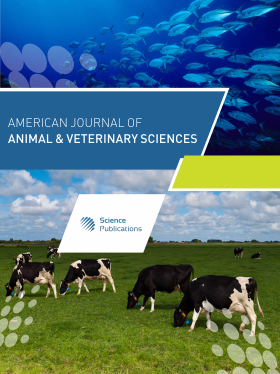Genetic Diversity of Three Indigenous Cattle Breeds Reared in Benin
- 1 Pan African University Institute for Basic Sciences, Kenya
- 2 Jomo Kenyatta University of Agriculture and Technology, Kenya
- 3 University of Abomey-Calavi, Benin
Abstract
Livestock production is an important component of the Benin economy contributing an upward of 25% of the agricultural Gross Domestic Products (GDP). Indigenoues cattle sector contributes more to the GDP compared to other livestock species. Despite the economic role played by the sector, there has been little or no efforts to genetically improve the indigenous cattle in the country. Recently, the government and other development partners have embarked on projects to improve the sector performance. The first step would be to morphologically and genetically characterize the cattle populations so as to match them with the available resources for optimal conservation and utilization. There exist no genetic diversity information for the different cattle types in Benin. The objective of this study was thus to determine the genetic diversity of the three most abundant indigenous cattle types. A total of 86 cattle from all three breeds were genotyped at the 14 loci. High levels of allelic and gene diversity were observed with an overall mean of 8.67 and 0.76 respectively. The mean inbreeding estimate within breeds was found to be negative at -0.124, -0.111 and -0.146 in Azawak, Borgou and Somba cattle breeds respectively. The global F statistics and AMOVA resulted in low genetic differentiation among the breeds with 1.14% of total variation being attributed to between-breed differences. Neighbor-joining tree revealed Azawak and Borgou clustered together while Somba breed being relatively distinct from the aforementioned. High levels of admixture were evident from the distribution of pairwise inter-individual allele sharing distances. Besides, the STRUCTURE analysis confirmed the tight genetic linkage between the breeds. High genetic diversity and poor genetic structure among the cattle breeds investigated could be due to historic zebu–taurine admixture and unstructured breeding practices. This results will aid in design of sustainable indigenous cattle genetic improvement programmes.
DOI: https://doi.org/10.3844/ajavsp.2019.40.49

- 6,779 Views
- 4,822 Downloads
- 4 Citations
Download
Keywords
- Biodiversity
- Conservation
- Genetic Structure
- Livestock
- Microsatellites Markers
